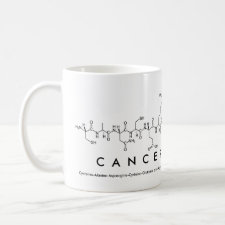
Authors: Wang MQ, Zhou JJ, Zhang GX, Liu Q, Zhang QY
Article Title: Pyrrolidinyl ligand motif-assisted bovine serum albumin molecularly imprinted polymers with high specificity.
Publication date: 2022
Journal: Journal of Colloid and Interface Science
Volume: 609
Page numbers: 102-113.
DOI: 10.1016/j.jcis.2021.11.194
Alternative URL: https://www.sciencedirect.com/science/article/pii/S0021979721021135
Abstract: Ideal binding ligands for anchoring proteins are essential for the design and assembly of desirable molecularly imprinted polymers (MIPs). In this study, bovine serum albumin-MIPs (BSA-MIPs) were successfully prepared by orchestrating the involvement of orientation-controllable binding ligands via sequential thiol-ene click and thiol-ene-amine conjugation. We showed that the optimal thiol-ene-amine conjugates and binding ligands were decisive in determining the rebinding capacity and selectivity. The pyrrolidinyl MIPs exhibited the best adsorption capacity of 352 ± 22 mg/g and a superior imprinting factor of 4.72 among MIPs with various binding ligands. These favourable results were further studied by computational simulation and isothermal titration calorimetry (ITC). Molecular docking revealed the preferential binding free energy and H-bonds between BSA residues and the thiol-ene-amine conjugates. Meanwhile, the pyrrolidinyl ligand motif enabled entropy-favourable affinity to be achieved via hydrophobic effects with the BSA template by ITC thermodynamics. Because of these favourable bindings, the MIPs exhibited excellent adsorption specificity to BSA over competing proteins. The proof-of-concept of MIPs with orientation-controllable conjugates and proven binding ligands for target proteins demonstrates that this material is promising for use with a real biological sample
Template and target information: protein, bovine serum albumin, BSA
Author keywords: molecularly imprinted polymers (MIPs), Thiol-ene-amine conjugation, Pyrrolidinyl group, hydrophobic effect, adsorption capacity



Join the Society for Molecular Imprinting

New items RSS feed
Sign-up for e-mail updates:
Choose between receiving an occasional newsletter or more frequent e-mail alerts.
Click here to go to the sign-up page.
Is your name elemental or peptidic? Enter your name and find out by clicking either of the buttons below!
Other products you may like:
 MIPdatabase
MIPdatabase









